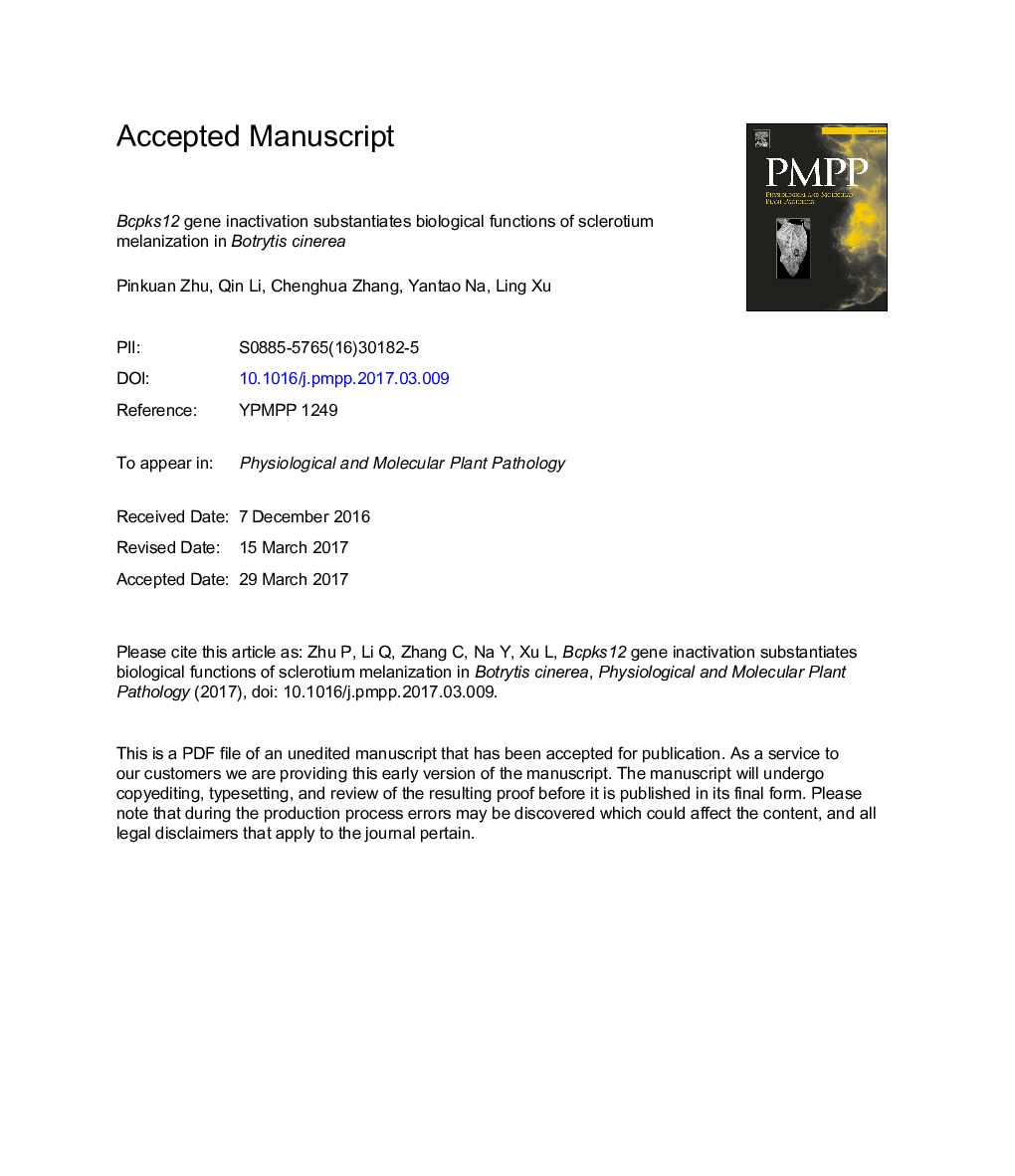| Article ID | Journal | Published Year | Pages | File Type |
|---|---|---|---|---|
| 5592611 | Physiological and Molecular Plant Pathology | 2017 | 19 Pages |
Abstract
The sclerotium is a highly melanized dormant structure that plays an important role in the survival of many types of fungi. In Botrytis cinerea, the polyketide synthase gene, Bcpks12, was exclusively required for the melanization of sclerotia that are specifically expressed during sclerotial development. The albino sclerotia of Îbcpks12 mutants produced in this study displayed hypersensitivity to external stressors, including extreme temperatures, oxidative chemicals, and desiccation. During the sclerotial development process, the initial sclerotia of the wild-type strain secreted novel liquid droplets on the surfaces, although these exudates gradually disappeared as the sclerotia became deeply pigmented with melanin. In contrast, the exudates accumulated and remained on the surface of the non-melanized sclerotia produced by the Îbcpks12 mutants. The sclerotial liquid exudates were confirmed to contain nutrients and effectively stimulate spore germination. This combination of results substantiates the hypothesis that melanin pigmentation is necessary for the maturation of fungal sclerotia, which thus terminates the secretion of nutrition-rich exudates and seems to be essential to sclerotial survivability through adverse conditions.
Related Topics
Life Sciences
Agricultural and Biological Sciences
Plant Science
Authors
Pinkuan Zhu, Qin Li, Chenghua Zhang, Yantao Na, Ling Xu,
